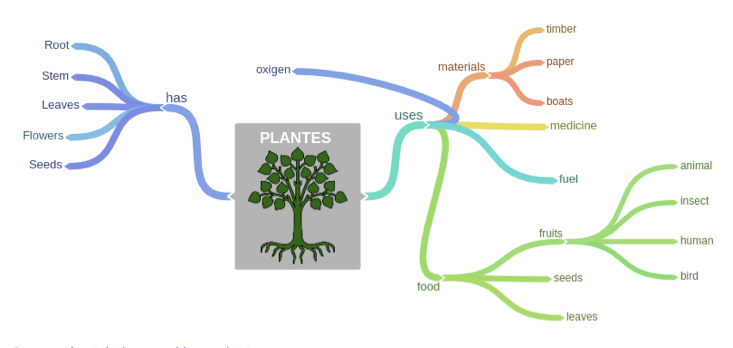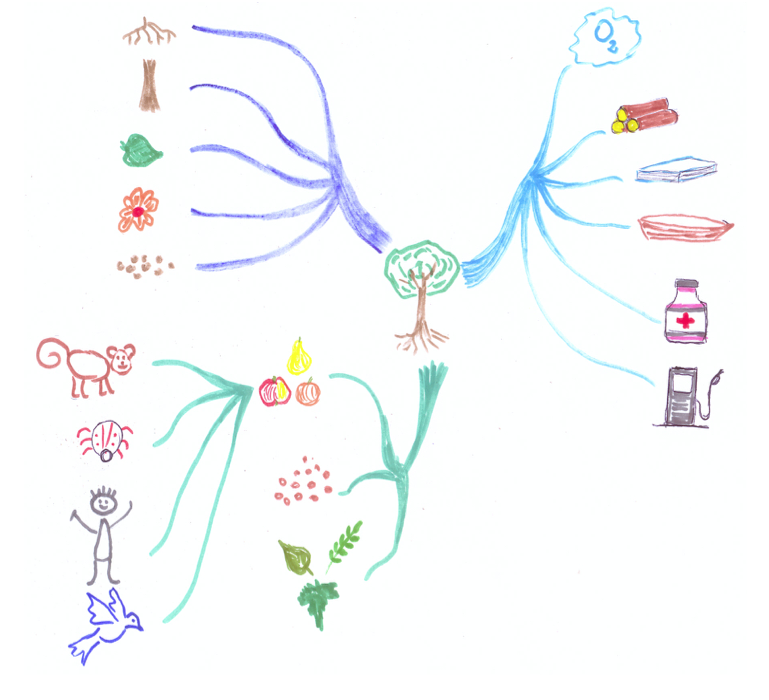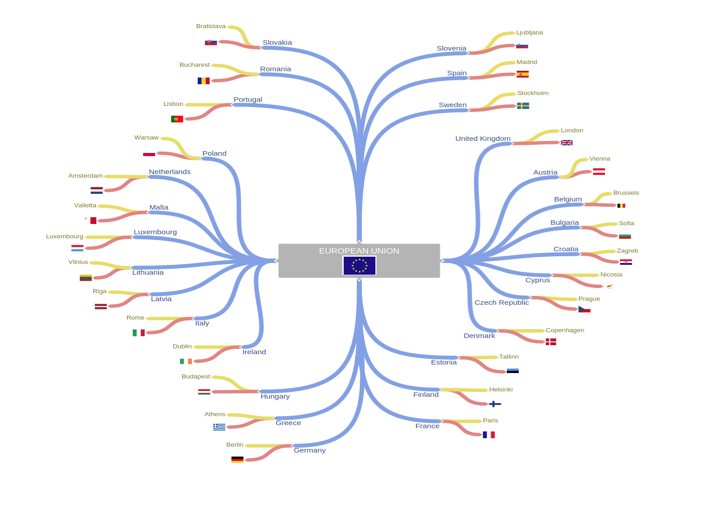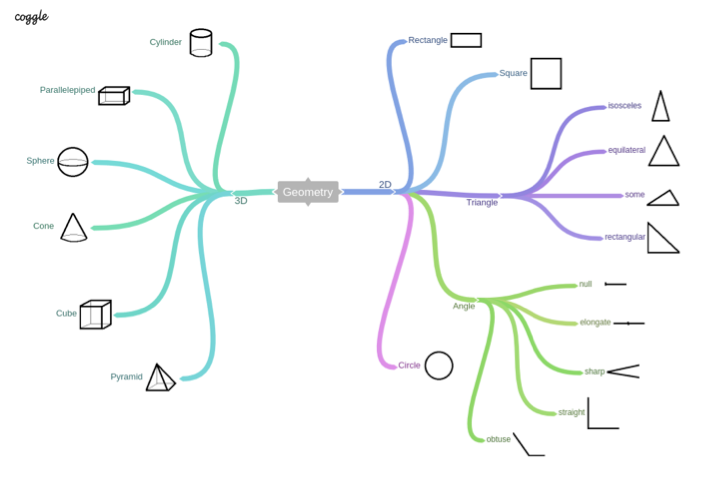A Mind map visual represents hierarchical ideas and concepts and helps to better synthesise and structure the information. Usually a mind map is designed around a single concept represented by an image and/or a word that connect through links other major concepts to which connect branches with other concepts. All these concepts form a radial structure or fireworks.
Mind map structure:
- Central node
- Labelled links
- Branches with sub-nodes
A Mind map stimulates many areas of the brain because it use graphics.
A Mind map can be drawn by hand or using a software application.
Uses of Mind maps:
- To Organise and structure knowledge and classify information
- To Present information – better understanding of a text and memorising of main ideas
- Learning and memorising;
- Planning (study time, events, presentations, project)
- Problems solving by improving cognitive functions
- Brainstorming and creativity
- Taking notes and summarising a text or a presentation
- Decision taking
We should note that two Mind maps representing the same subject, but created by two different people will look different. This is because each person has their own way of thinking logically and gathering knowledge from experiences which will be reflected in the Mind map. Also, a person my have different representations at different moments of time for the same subject.
Example -Mind map representing parts of a plant designed with a software application.

Created with https://coggle.it
The same example of Mind map representing parts of a plant designed by hand.

Example – EU countries with capitals and flags

Example – figures in geometry









